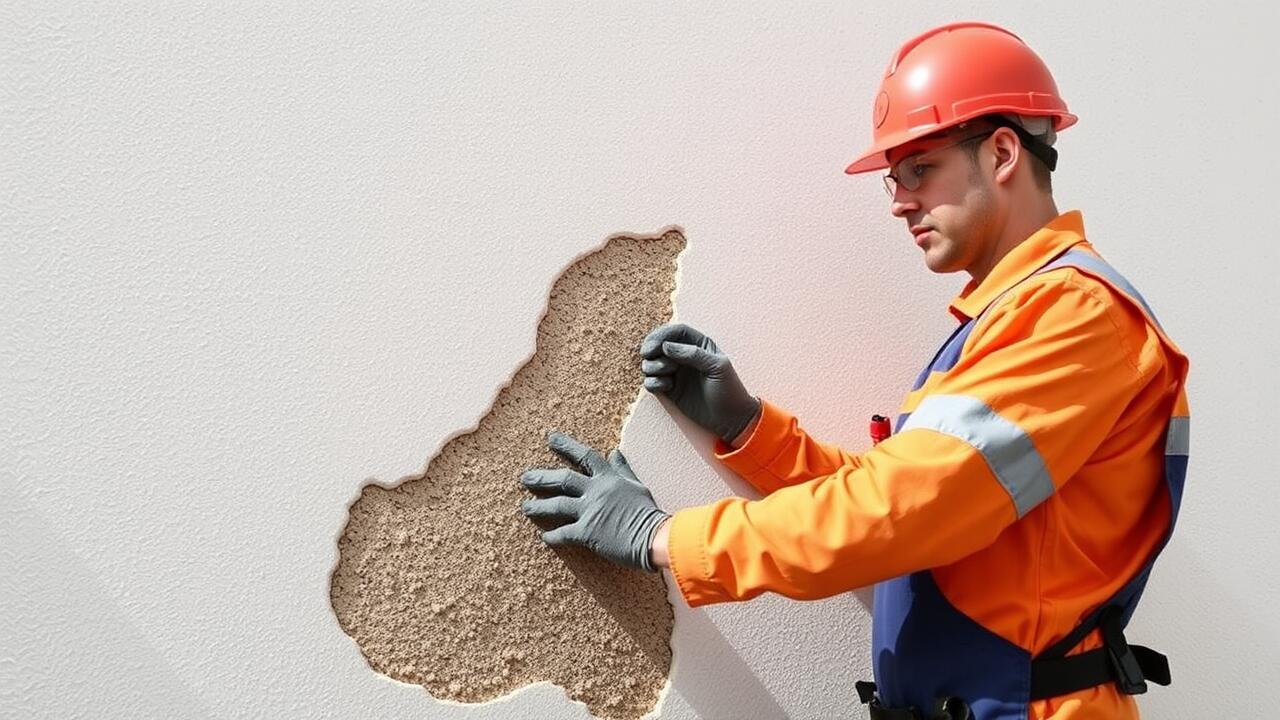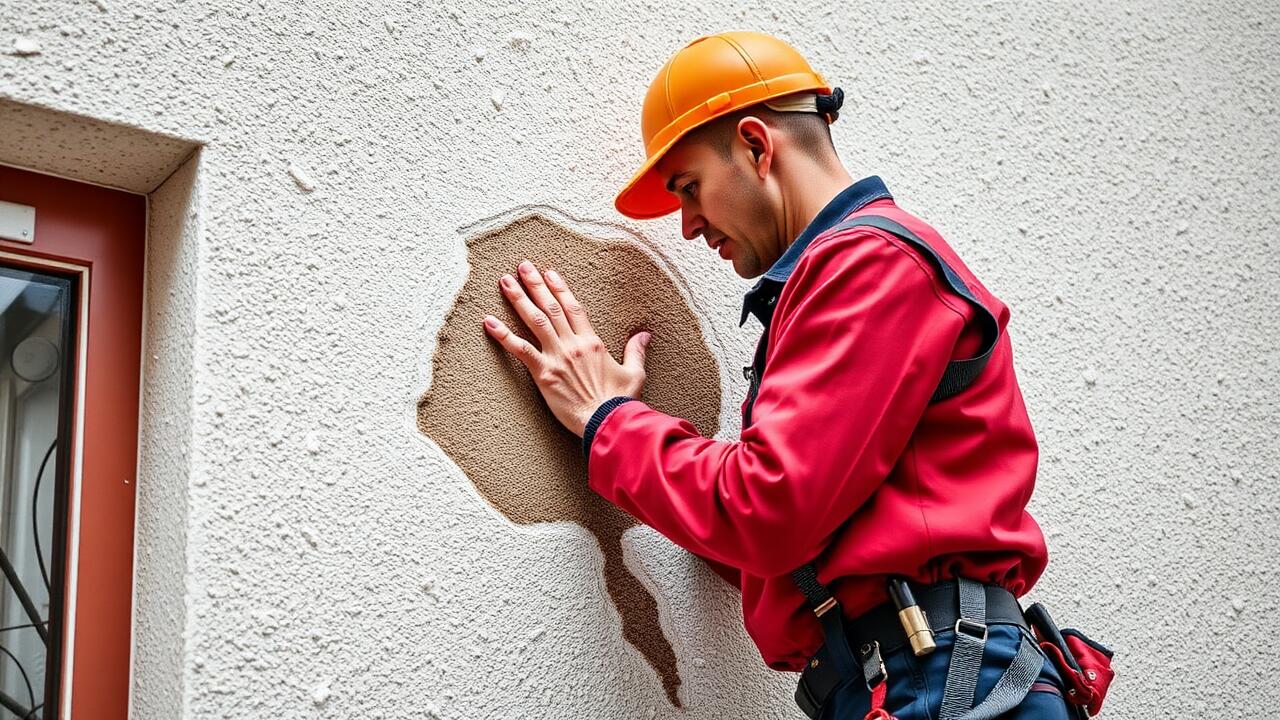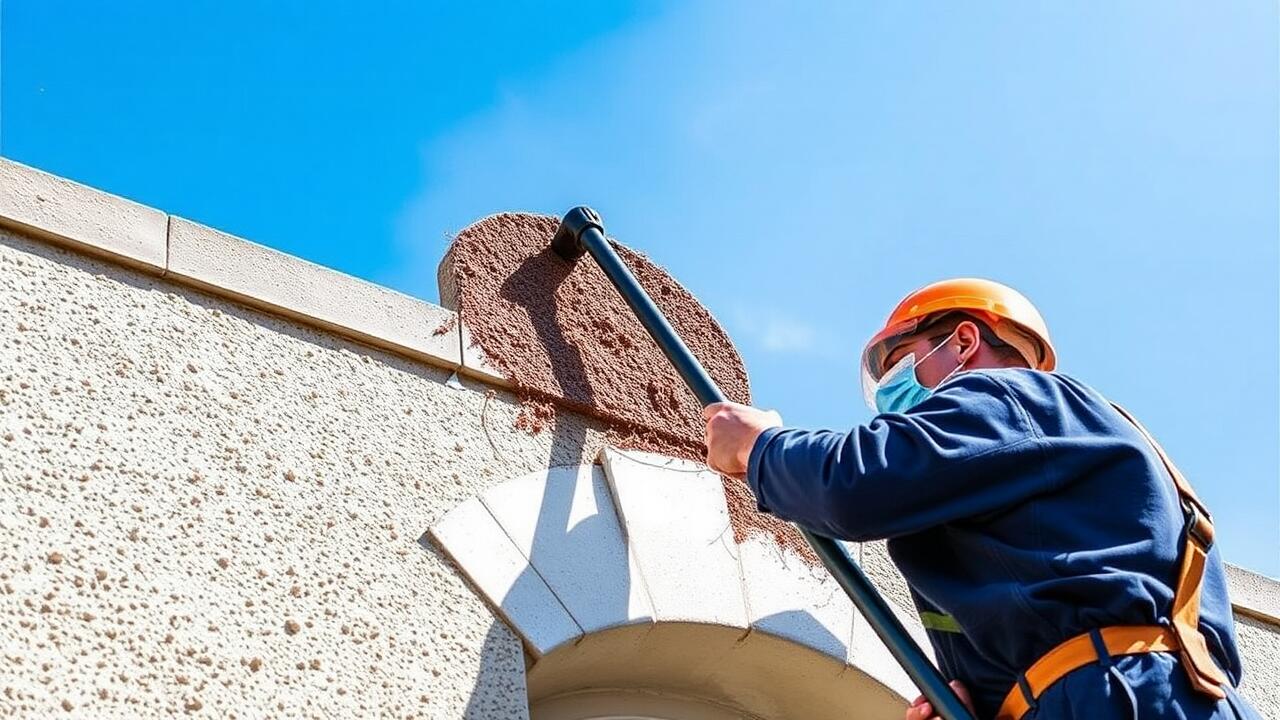
Applying the Patch to the Damaged Area
Before applying the patch, it is essential to prepare the damaged area properly. Start by cleaning the surface to remove any dirt, debris, and loose stucco. Use a wire brush or scraper to ensure a solid foundation for the patching material. Assess the depth of the damage to determine if additional layers will be needed. For best results, wet the area lightly before application. This helps the patch adhere better while preventing it from drying out too quickly.
When ready to apply the patch, use a trowel to carefully spread the stucco mix into the damaged area. Aim for a thickness that matches the surrounding surface to achieve a seamless repair. Press firmly to ensure good adhesion and smooth the edges to blend into the existing wall. For residents seeking professional options, companies specializing in Stucco Patching North Hollywood, Los Angeles, offer expertise to ensure a durable and visually appealing result.
Techniques for Smooth Application
Achieving a smooth application during stucco patching requires careful attention to the tools and techniques used. A quality trowel, ideally with a stainless steel blade, can help distribute the patch material evenly. Start by applying the patch with a firm, steady hand. Use a sweeping motion, working from one edge to the other, to ensure that the material fills in any gaps and adheres properly to the existing stucco. For small areas, a putty knife can offer more precision and facilitate a refined finish.
After the initial application, it is essential to smooth the surface. A float, particularly a magnesium one, can be used to finesse the patched area. This tool helps compress the material and blend it with the surrounding stucco. In areas with more intricate textures, consider using a sponge to replicate the original finish. For those in the region, professional services like Stucco Patching Canoga Park, Los Angeles, can provide expertise in these techniques, ensuring a seamless repair that matches your home’s exterior aesthetics.
Finishing Touches After Patching
Once the patching process is complete, the finishing touches play a significant role in the overall appearance of your stucco. Use a putty knife to gently feather the edges of the patch. This helps to create a smooth transition between the repaired area and the surrounding surface. Depending on the surrounding texture, you might choose to mimic the original stucco finish. Consider applying a texture spray or using a brush to achieve a similar look. For those in the area, hiring professionals experienced in Stucco Patching Pacific Palisades, Los Angeles can ensure that the final appearance matches the home’s existing charm.
After blending the patch with the original stucco, allow time for any texture or finish to set properly. This stage is crucial for achieving a uniform look across the entire surface. Assess the color of the patch after the drying process; if necessary, additional paint or color washes can be applied carefully to ensure consistency. Keep in mind that multiple layers may be required to achieve a seamless blend. Investing in quality materials and techniques during the finishing phase can greatly enhance the overall durability and aesthetics of your stucco.
Methods for Blending the Patch
Blending the patched area with the surrounding stucco requires careful attention to detail. Start by examining the texture of the existing stucco. Using tools like a trowel or sponge, replicate the texture patterns found nearby. Press the tools lightly against the patch to create an even finish that matches the original surface. It is essential to work while the patching material is still pliable to achieve the best results.
Color matching is another critical aspect of blending. Assess the shade of the existing stucco and mix pigments into the patching compound if necessary. Apply the color in light layers and check how it dries. This cautious approach helps ensure that the patched area does not stand out against the surrounding wall. Many homeowners in the area, especially those seeking Stucco Patching Boyle Heights, Los Angeles, recommend doing a small test patch first, allowing time to evaluate the final appearance before proceeding with larger repairs.
Curing and Drying Time for Stucco
Curing and drying time for stucco is crucial to ensure the longevity and effectiveness of the repair. Typically, stucco needs to cure for a minimum of 24 to 48 hours to reach its initial strength. However, environmental conditions can impact this timeframe significantly. Higher temperatures and low humidity may lead to quick evaporation of moisture, which can hinder the curing process. In contrast, cooler and more humid conditions may extend the curing time.
For effective stucco patching, especially in areas like North Hollywood, Los Angeles, it is essential to monitor the curing process closely. Applying a mist of water over the patched area can help maintain moisture levels, promoting even curing. Understanding the specific climate conditions of the location aids in determining the best practices for this stage of the repair, ensuring the patch bonds well with the existing stucco and maintains structural integrity.
Factors Affecting Drying and Curing
Several factors influence the drying and curing of stucco. Temperature plays a significant role; warmer conditions generally promote faster drying, while cooler temperatures can prolong the process. Humidity levels also affect how quickly the stucco sets. High humidity may slow down curing times, leading to potential issues with adhesion and finish quality. When considering stucco patching in North Hollywood, Los Angeles, local weather patterns must be taken into account to achieve the best results.
The application thickness further impacts drying time. Thin layers of stucco patching tend to dry more quickly compared to thicker applications, which may require extended curing periods. Windy conditions can aid drying but may introduce dust and debris, potentially compromising the patch's integrity. Proper assessment of site-specific factors is crucial for successful stucco patching in North Hollywood, Los Angeles. Observing these elements can help ensure a durable and aesthetically pleasing exterior finish.
FAQS
What is the first step in patching exterior stucco?
The first step is to clean the damaged area thoroughly to remove any loose debris, dust, or old stucco. This ensures that the patch adheres properly.
How can I achieve a smooth application when patching stucco?
To achieve a smooth application, use a trowel to apply the stucco patch, and make sure to feather the edges to blend with the surrounding surface. Practice steady pressure and even strokes.
What finishing touches should I apply after patching stucco?
After patching, it’s important to texture the surface to match the existing stucco. You can use a sponge or brush to create a texture that blends seamlessly with the surrounding area.
How do I blend the patch with the existing stucco?
You can blend the patch by using the same texture technique as the surrounding stucco. Additionally, applying a coat of paint that matches the existing color can help with the overall appearance.
What factors affect the curing and drying time of stucco?
Factors that affect curing and drying time include temperature, humidity, and wind conditions. Generally, stucco dries faster in warmer, dry conditions, while cooler or humid weather can prolong the drying process.


